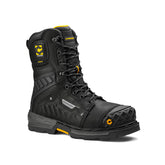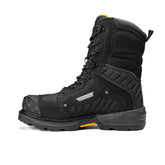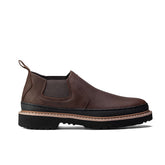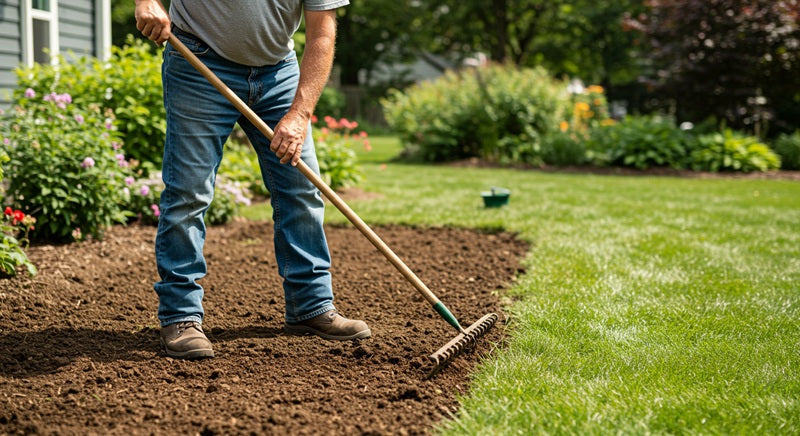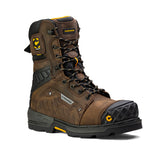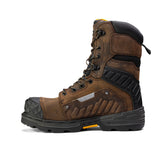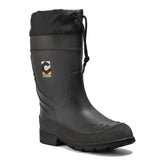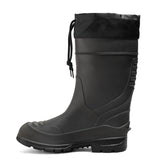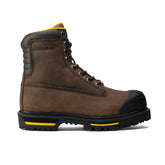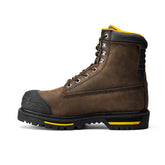Best Boots for Landscaping
Landscaping isn’t for the faint of heart. Long hours on rough terrain, exposure to rain and mud, and the constant strain of lifting, digging, and hauling make the right footwear non-negotiable.
A solid pair of boots isn’t just about comfort (though that’s a must, of course). It’s also a frontline defense against fatigue, injury, and those unexpected hazards lurking in the dirt.
So what makes a boot the right choice for a landscaper? Not all work boots pull their weight on grass, gravel, and concrete. Some trap heat like a greenhouse; others turn into lead weights after a few hours. The trick is finding that sweet spot—durability without stiffness, protection without bulk. Let’s break it down.
What to Look for in Landscaping Boots
Some boots look tough but fold under pressure. Others feel great at first but punish your feet by midday.
A landscaper’s boot needs to strike a balance between resilience and wearability. The most durable options are typically crafted from full-grain leather, which withstands abrasions far better than synthetic materials.
Reinforced stitching and a sturdy build prevent seams from splitting under the constant strain of bending, kneeling, and climbing. A well-made boot should hold up through relentless exposure to dirt, moisture, and heavy use, season after season.
Weather resistance is another critical factor. Landscaping doesn’t take a break for rain, and neither should your boots. Waterlogged feet lead to discomfort, blisters, and even more severe conditions like trench foot if neglected.
A reliable waterproof membrane or sealed seams can make all the difference, keeping moisture out while allowing your feet to breathe. Nobody wants to work an entire shift with damp socks squelching inside their boots.
Comfort should never be overlooked, especially when you’re on your feet for eight to twelve hours straight. Without adequate support, every uneven surface and jarring step starts to wear on your body. Shock-absorbing midsoles and contoured footbeds can reduce foot fatigue, helping to prevent long-term issues like plantar fasciitis. Some boots even mold to the shape of your foot over time, providing a customized fit that enhances comfort.
 Traction and stability are equally important. Landscapers encounter a variety of surfaces, from wet grass and loose dirt to slick pavement and jagged rock. A slip-resistant outsole with deep lugs ensures steady footing, reducing the risk of falls when carrying heavy materials or navigating steep inclines.
Traction and stability are equally important. Landscapers encounter a variety of surfaces, from wet grass and loose dirt to slick pavement and jagged rock. A slip-resistant outsole with deep lugs ensures steady footing, reducing the risk of falls when carrying heavy materials or navigating steep inclines.
Breathability can make or break a boot’s comfort level. Excessive sweat buildup creates an uncomfortable environment, leading to blisters and unpleasant odors. Moisture-wicking linings and ventilation panels promote airflow, keeping your feet cool and dry throughout the day.
Toe protection is another consideration. While steel toes offer maximum protection against heavy objects, they can feel bulky and conduct heat or cold, making them less ideal for extreme temperatures. Composite toe caps provide a lighter alternative while still meeting safety standards, and for landscapers who don’t require impact protection, reinforced soft toes offer flexibility without added weight.
Finally, while protection and durability are paramount, boots that are excessively heavy can hinder movement and lead to unnecessary fatigue. The best landscaping boots strike a balance between ruggedness and agility, allowing for long hours of wear without feeling like ankle weights.
Chinook Footwear’s Best Landscaping Boots
Chinook Footwear designs boots with real-world durability in mind, ensuring they hold up to the demands of landscapers. The Scorpion Waterproof Work Boot is a great choice for those facing wet conditions, offering waterproof protection without sacrificing comfort. Its cushioned footbed and sturdy build make it ideal for all-day wear.
For those working on uneven terrain, the Logger Boot provides ankle support and a deep tread pattern that grips into loose dirt and gravel. The aggressive outsole design helps maintain stability on slopes and rocky ground, reducing the risk of slipping.
If heavy-duty protection is required, the Tarantula Steel Toe Boot is built for the toughest landscaping jobs. With a steel toe cap, slip-resistant outsole, and reinforced construction, this boot is designed for those handling heavy machinery, stone, or large loads.
Choosing the Right Landscaping Boots
The ideal landscaping boot depends on the specific challenges of your work environment. If you frequently deal with wet conditions, a waterproof boot with a breathable lining will keep your feet dry without overheating. On the other hand, if your job takes you across uneven ground, additional ankle support and deep-lug outsoles will provide the stability needed to navigate rough terrain safely.
For landscapers who spend long hours on their feet, cushioning and lightweight construction are critical to preventing fatigue. Shock-absorbing midsoles and ergonomic footbeds can significantly reduce strain, making a full day’s work far more manageable. If your tasks involve handling heavy materials or equipment, reinforced toe protection—whether steel or composite—ensures safety without compromising comfort.
Boot Care Tips to Extend Their Lifespan
Investing in a high-quality pair of boots is only half the battle; proper maintenance is essential to keep them performing at their best. Regular cleaning helps prevent the buildup of mud, chemicals, and debris that can degrade materials over time. A simple brush-off at the end of each workday, combined with occasional deep cleaning using mild soap, can make a significant difference.
Drying your boots properly is just as important as cleaning them. Wet boots left in damp conditions can develop mold, odor, and even structural damage. Avoid drying them with direct heat sources like space heaters or open flames, as excessive heat can cause leather to crack. Instead, stuffing them with newspaper or using a boot dryer ensures moisture is removed gradually and safely.
Waterproof boots need periodic re-treatment to maintain their resistance. Leather conditioners and waterproofing sprays help restore the protective barrier, ensuring they remain effective against moisture. Additionally, insoles should be replaced as they wear down, as fresh footbeds provide continued support and cushioning.
Landscaping is demanding work, and your boots should be up to the challenge. The right pair will keep you comfortable, protected, and moving efficiently throughout the day, no matter the terrain or weather conditions. Chinook Footwear offers boots built for durability, ensuring that you can tackle every landscaping project with confidence. When your feet are well-supported, the job feels a whole lot easier.

